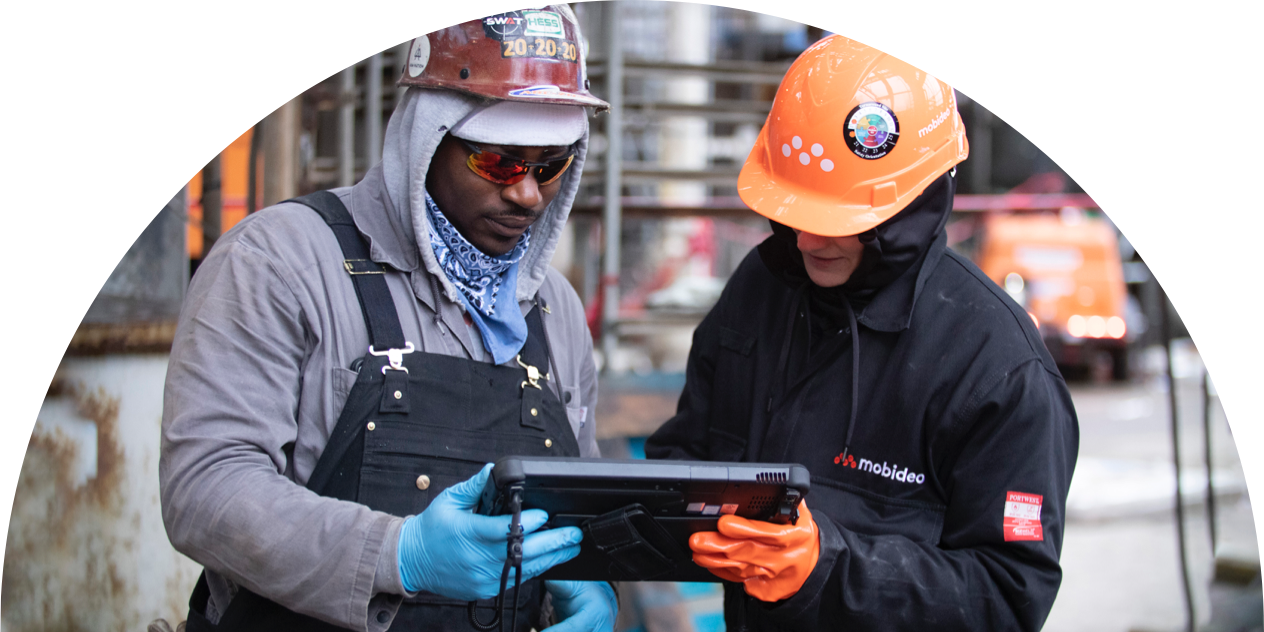Challenges
Social Distancing
Finding new ways to be effective with restricted physical access to colleagues.
Remote Supervision
Eliminating physical, onsite presence while maintaining productivity.
Agility/Flexibility
Fast adaptation to constantly changing realities and to ensure the health and safety of workers.
Knowledge Sharing
Transfer of basic data/information with minimal physical interaction and group meetings and move to the paperless world.
The Human Factor
Lack of communication, inaccurate decision-making, human error and insufficient/inaccurate reporting.
Connecting People
Bringing people closer together even when they are physically apart; integrating collaborative technologies to effectively transform the way business is done.
Expertise & Collaboration
Large, complex equipment requiring the collaborative work of multiple Subject Matter Experts (SMEs), contractors and inhouse workers.
Scheduling & Planning
Dynamic environment with multiple moving activities that are constantly changing, directly affecting the ability to update the schedule and modify the plan
Compliance & Documentation
Ensuring compliance with work process and best practices
Complexity, Safety & Risk
Increasingly complex equipment and plants, coupled with growing demands for quality, safety and on-time/early job completion, with fewer resources.
Solution
The Mobideo Platform digitalizes workflows, forms and checklists and delivers notifications, alerts, reports, digital wallcharts and KPI dashboards. This digitalization of industrial workforces means connectivity, which is essential in any pandemic. In industrial settings, it is the key to creating a pandemic-resilient workplace. Connecting workers, managers, and all other stakeholders, it optimizes complex work processes and empowers collaborative teamwork, contractor management and knowhow ingestion, while meeting the demands for social distancing. The Mobideo Platform digitalizes industrial workforces, providing the essential connection – without physical contact, but with appropriate control – required for any pandemic-resilient workplace. This digitalization delivers three important solutions:
Connected Workers
The Mobideo App enables workers to use any mobile device to access all the information they need to perform their work at the point-of-service. Guiding them through the work process through digitalized checklists and sign-offs, it eliminates the need for on-site inspection/supervision and enables communication and sharing of real-time work status with managers and peers, without physical interaction.
Connected Managers
The Mobideo Control Center connects managers at all levels, giving them real-time situational awareness, visibility, and insights into all remote work activities. Digital charts and dashboards empower better, faster, and more reliable decision-making based on the facts in the field, without the necessity for any physical interaction or paper documents.
Process Optimization
The Mobideo Optimizer generates a rich data set that enables owner-operators to evaluate how tasks are actually being executed; identify trends, work patterns and delays; drive continuous process improvement; and strengthen operational excellence.
Benefits
Real-time visibility and management of work activities
Enables online viewing/tracking of work progression – irrespective of the location of the work – in real-time, throughout the day, on digital charts and dashboards. This eliminates the necessity to be physically present on location and ensures awareness of who did what, when, and on what equipment (through time, user and GPS timestamps). Additionally, the time required for update and handover meetings is reduced; more time is left to make better decisions based on real-time data; available resources are optimally utilized; and more work can be performed with less people.
Better planning and management of contractors
Better synchronization and control of contractor scheduling and work execution, ensuring that contractors are in the right place, at the right time, with the information, tools, equipment and materials they need. In addition to reducing wasted time, this increases productivity through better contractor surveillance, supervision, accountability and traceability and ensures that less contractors are present at any given time. Digitalization ensures that all information required to work is available in digital checklists on any mobile device, and delivers the agility and flexibility to easily and rapidly change roll-outs and procedures, and make contractors aware of them immediately.
Better & faster schedule updating
Improves schedule updating processes (several hours daily) by eliminating much of the manual effort currently associated with this process, such as the manual collection of status updates from field supervisors and meeting with schedulers to provide collated updates. Digitalization means that supervisors do not have to supervise contractor work, which can be reviewed and approved online, in real-time. This eliminates the wait to manually receive often out-of-date and inconsistent documents and data from multiple sources; reduces administrative tasks; improves decision-making quality and speed; saves time and reduces risks.
Automatic compilation of field data into final reports
Streamlines reporting by eliminating the collation of notes, digital photos, and handwritten data from clipboards; transposing of data to systems of record; the duplication of data entry; and the countless hours spent working with software to create the required documentation. Furthermore, expert personnel (SMEs and contractors) require less office time for administrative tasks (reducing social interactions) and quality, consistency and compliance are improved while reducing supervision resource and wrench time.
Identification and early resolution of delays
Real-time status displays eliminate being several shifts behind activities and issues currently occurring in the field, enabling immediate, proactive and reactive responses when they count. This reduces delays by providing an understanding of the real priorities; allows more time for critical tasks; improves quality; and eliminates the cost and time associated with rework.
Improved discovery / scope change management
Real-time, online dashboards eliminate the need for all stakeholders to be onsite for review and approval, enabling global and distributed businesses to function with less reliance on travel. Systems operating globally improve consistency and get economies of scale, while digital tools allow management to function independently of location and time zones.
Better resource utilization, efficiency, and productivity
A considerable part of the work day is no longer lost waiting for instructions, or searching for resolutions to problems that may even have been prevented before they escalated. Increased productivity and social distancing and achieved through the elimination of waiting in groups and lines for permits to work, and trips to the office to get information.



